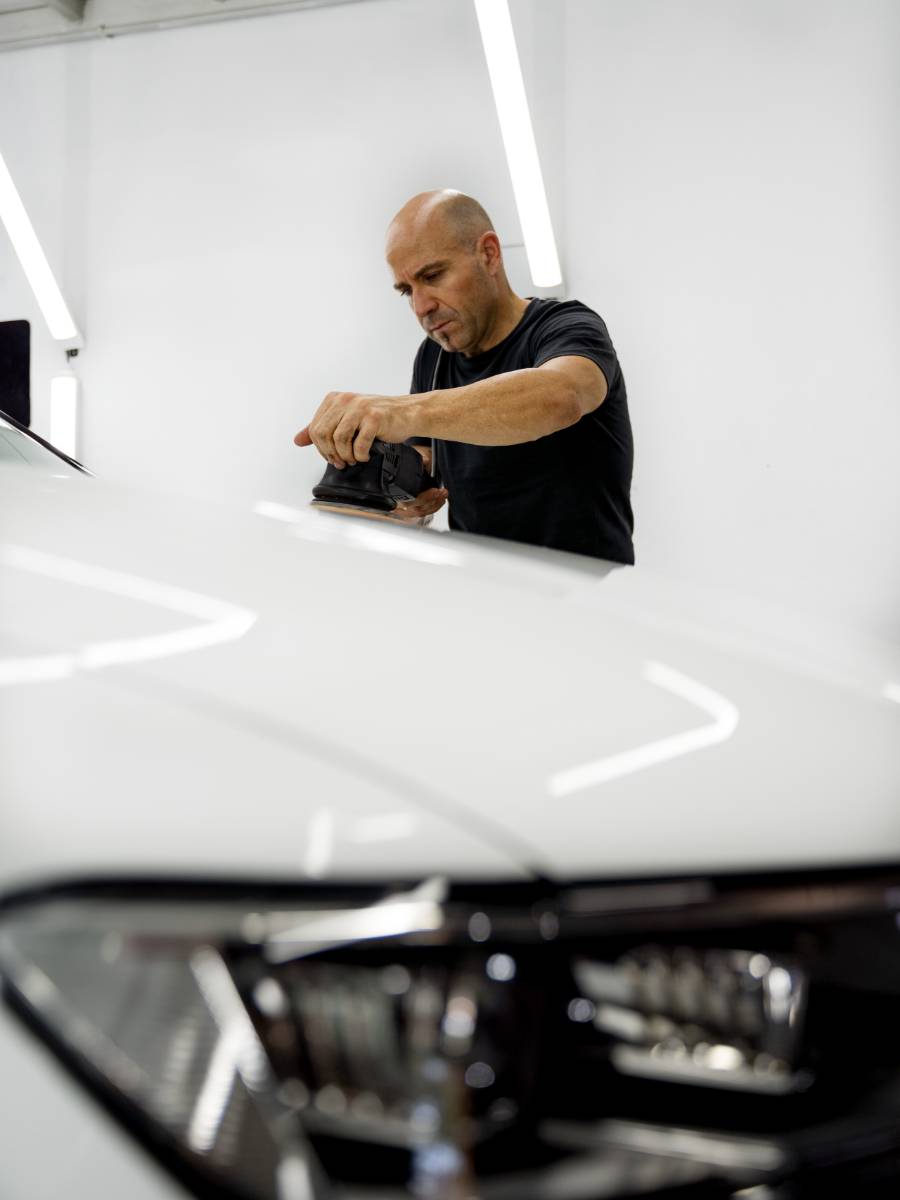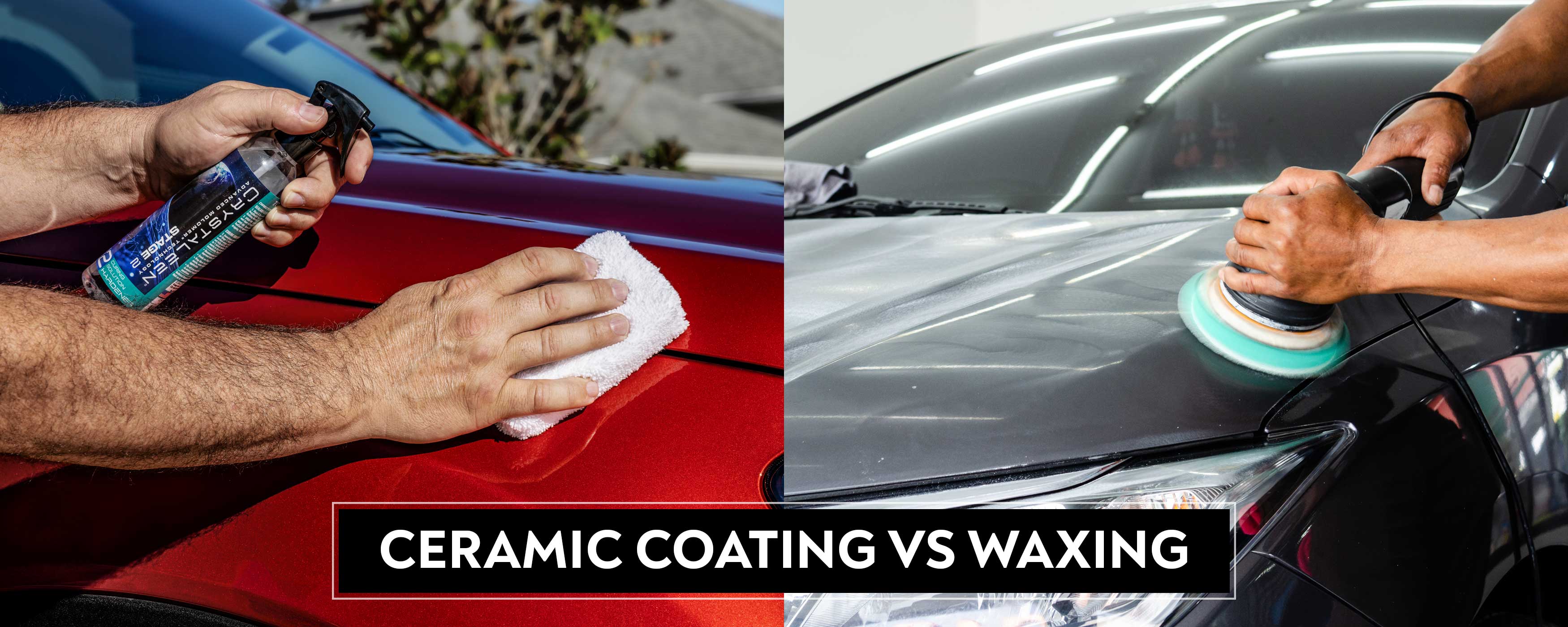Ceramic Coating: The Future of Automotive Surface Protection
Ceramic Coating: The Future of Automotive Surface Protection
Blog Article
Ceramic Finish vs. Typical Wax: Which Offers Better Long-Term Security?
The discussion in between ceramic coverings and conventional wax for automobile defense has actually amassed substantial focus amongst auto fanatics and specialists alike. While both offer the objective of guarding paint, their distinctions in longevity, application, and lasting maintenance prices may affect a consumer's choice. Ceramic coverings flaunt superior longevity and resistance to ecological aspects, yet the complexity of their application elevates inquiries concerning access and usefulness. As we check out these contrasting choices, it becomes important to consider not just the prompt advantages however also the effects for automobile care over time.
Summary of Ceramic Coating
Ceramic layer has obtained considerable appeal among auto enthusiasts and detailers alike as a result of its advanced safety qualities. This ingenious modern technology is created to produce a long lasting, hydrophobic shield over a lorry's paint surface, significantly enhancing its resistance to ecological contaminants such as dust, UV rays, and chemical spots. Unlike typical wax, which offers a momentary layer of protection, ceramic finishings bond at a molecular degree with the paint, providing resilient resilience-- commonly expanding beyond two years with appropriate upkeep.
The application procedure involves precise prep work of the automobile's surface area, consisting of cleaning and polishing to guarantee ideal bond. As soon as used, the covering remedies to develop a robust layer that not only adds deepness and gloss to the paint however likewise streamlines maintenance. With its hydrophobic properties, ceramic covering enables water and dirt to slide off even more conveniently, reducing the frequency of washes and minimizing the risk of swirl marks.
Furthermore, ceramic finishings are offered in different formulas, enabling individuals to select products customized to their details requirements and choices. Generally, ceramic finishing stands for a considerable improvement in paint protection innovation, delivering superior efficiency contrasted to traditional options.
Overview of Typical Wax
Commonly considered a staple in automobile care, wax offers as a prominent option for those seeking an uncomplicated technique to enhance and shield their lorry's paint - ceramic coating. Automotive wax normally makes up all-natural components, such as carnauba, or synthetic substances, created to produce a protective layer on the surface area of the paint. This layer not only enhances the lorry's gloss and radiate but also gives an obstacle against ecological pollutants
The application of wax is typically user-friendly, making it accessible for both experts and DIY lovers. As soon as applied, wax needs a healing period, after which it hardens to develop a safety covering.
However, while wax works for boosting the visual appeal of a lorry, it is essential to note that the security it supplies may necessitate more frequent reapplication compared to alternate products, such as ceramic layers. Overall, conventional wax stays a preferred alternative for those focusing on convenience of usage and prompt aesthetic renovation.
Resilience and Durability Comparison
While both ceramic finishings and standard wax deal safety benefits for vehicle paint, their toughness and long life vary dramatically. Typical wax, typically made from natural carnauba or artificial polymers, usually provides a safety layer that lasts about 3 to 6 months. This reasonably brief life expectancy demands routine reapplication to preserve ideal security.
In contrast, ceramic coverings are engineered from innovative nanotechnology, forming a covalent bond with the paint surface area. This causes a robust, hydrophobic layer that can withstand for two to 5 years, depending on the product and ecological problems. The exceptional toughness of ceramic finishes is associated to their chemical structure, which supplies enhanced resistance to scratches, UV rays, and oxidation.

Protection Versus Ecological Variables
Protecting a lorry's paint from ecological elements is essential for maintaining its appearance and worth gradually. Automobiles are constantly subjected to a variety of aspects, consisting of UV rays, bird droppings, tree sap, acid rainfall, and roadway gunk, every one of which can compromise the stability of the paintwork.
Ceramic finishes offer a durable protection versus these environmental aggressors. Unlike standard wax, which can weaken quickly under UV exposure, ceramic finishes create a durable, hydrophobic layer that withstands visit this site right here the dangerous results of sunshine and toxic wastes. This innovative modern technology creates a chemical bond with the vehicle's surface, providing remarkable security that lasts for several years, also in rough problems.
Traditional wax, while simpler to apply, normally calls for constant reapplication and supplies minimal resistance to impurities and UV rays. With time, it can damage down, leaving the paint vulnerable to scratches and oxidation. On the other hand, ceramic coverings maintain their safety qualities longer, significantly reducing the risk of paint damages and ensuring that the vehicle retains its visual allure. Because of this, ceramic finishes are progressively acknowledged as the exceptional choice for lasting defense against ecological aspects.
Application and Maintenance Distinctions
The methods of application and succeeding upkeep for ceramic finishings and standard wax differ substantially, impacting the general customer experience and effectiveness of each product. Ceramic layers need an even more intricate application process, commonly involving surface prep work that consists of washing, decontaminating, and brightening the vehicle. Once the surface is all set, the ceramic covering is applied in a regulated setting, often needing expert proficiency to guarantee correct healing and bonding to the paint.

While both items boost lorry look, the longer-lasting protection offered by ceramic finishings may validate their preliminary financial investment, regardless of the even more requiring application procedure. On the other hand, standard wax continues to be a prominent selection for those looking for a less complex, albeit temporary, remedy.

Conclusion
Finally, ceramic layers show substantial benefits over typical wax in regards to resilience and environmental protection. With a life expectancy prolonging two to five years and remarkable resistance to UV rays, dirt, and chemical spots, ceramic finishes use a much more efficient solution for long-term car maintenance. The application procedure may call for specialist knowledge, the resulting expense financial savings and minimized frequency of reapplication emphasize the value of ceramic finishings for those seeking optimum car protection.
The dispute between ceramic coatings and typical wax for automobile protection has actually garnered substantial interest amongst automobile fanatics and experts alike. Unlike standard wax, which offers a short-lived layer of security, ceramic coverings bond at a article source molecular degree with the paint, offering durable sturdiness-- often prolonging past two years with appropriate upkeep.
While both ceramic finishings and typical wax offer safety advantages for automobile paint, their longevity and longevity differ significantly. For automobile fanatics seeking long-lasting security, ceramic coatings provide an engaging benefit over traditional wax products.
In final thought, ceramic coatings demonstrate considerable benefits over traditional wax in terms of sturdiness and ecological protection.
Report this page